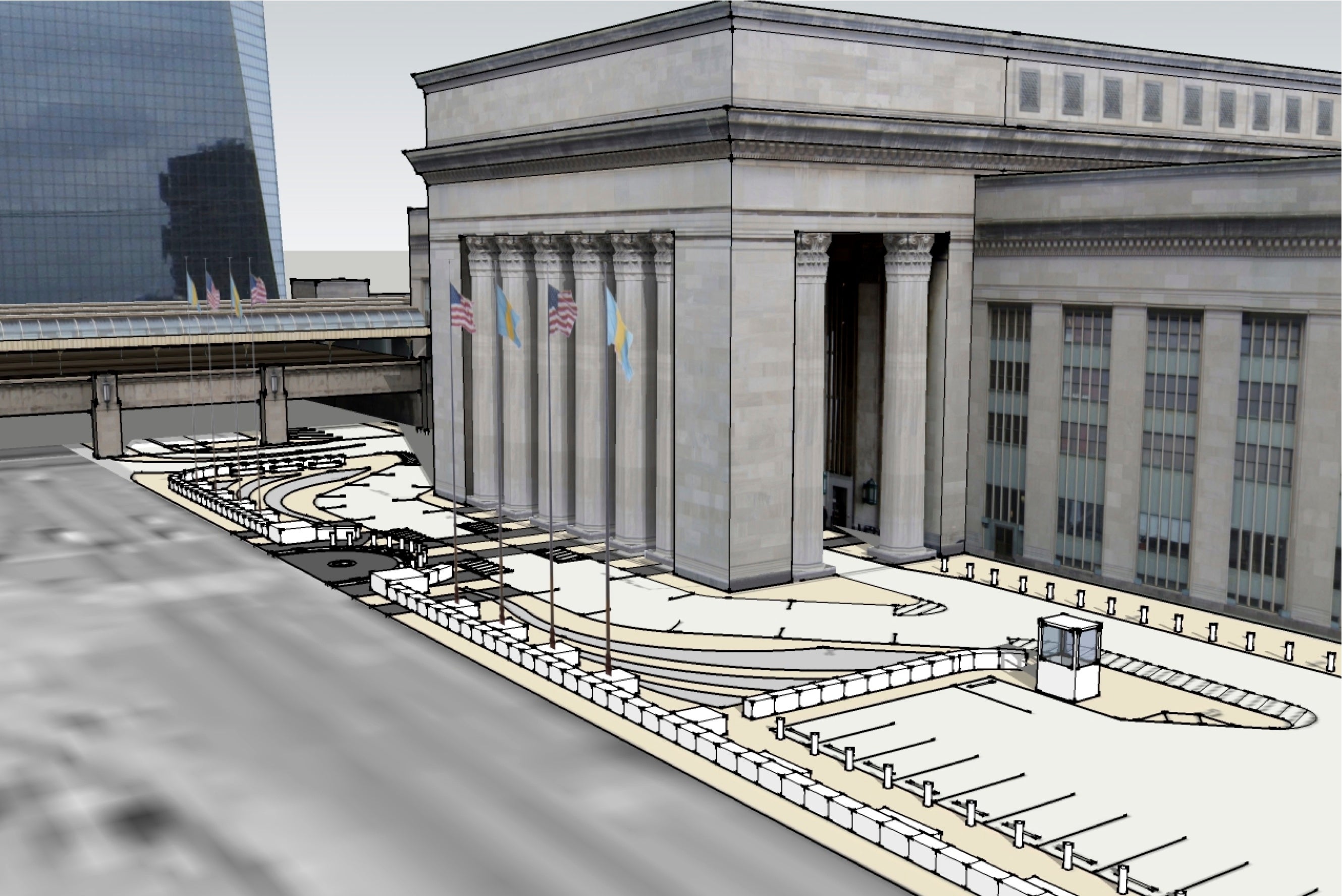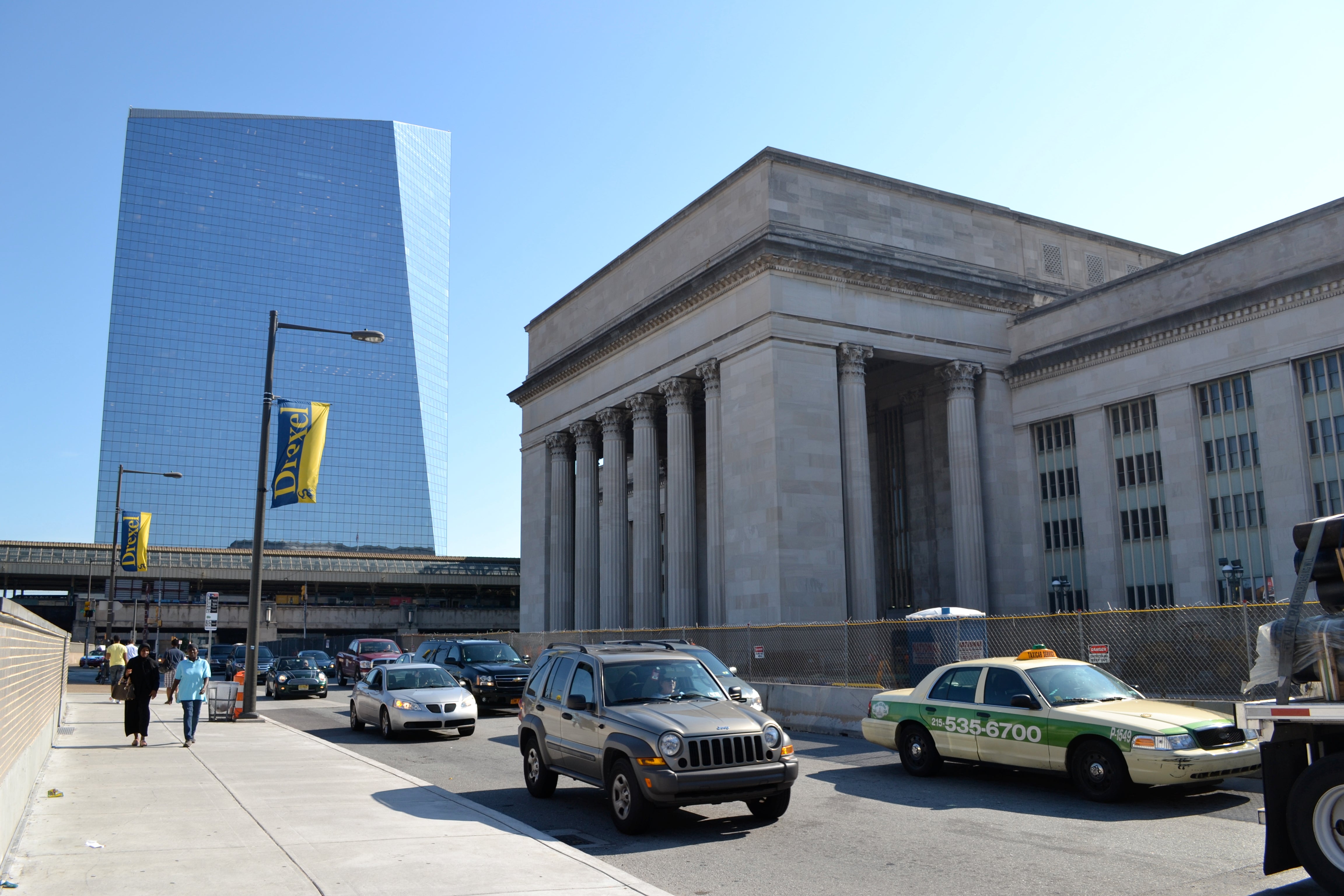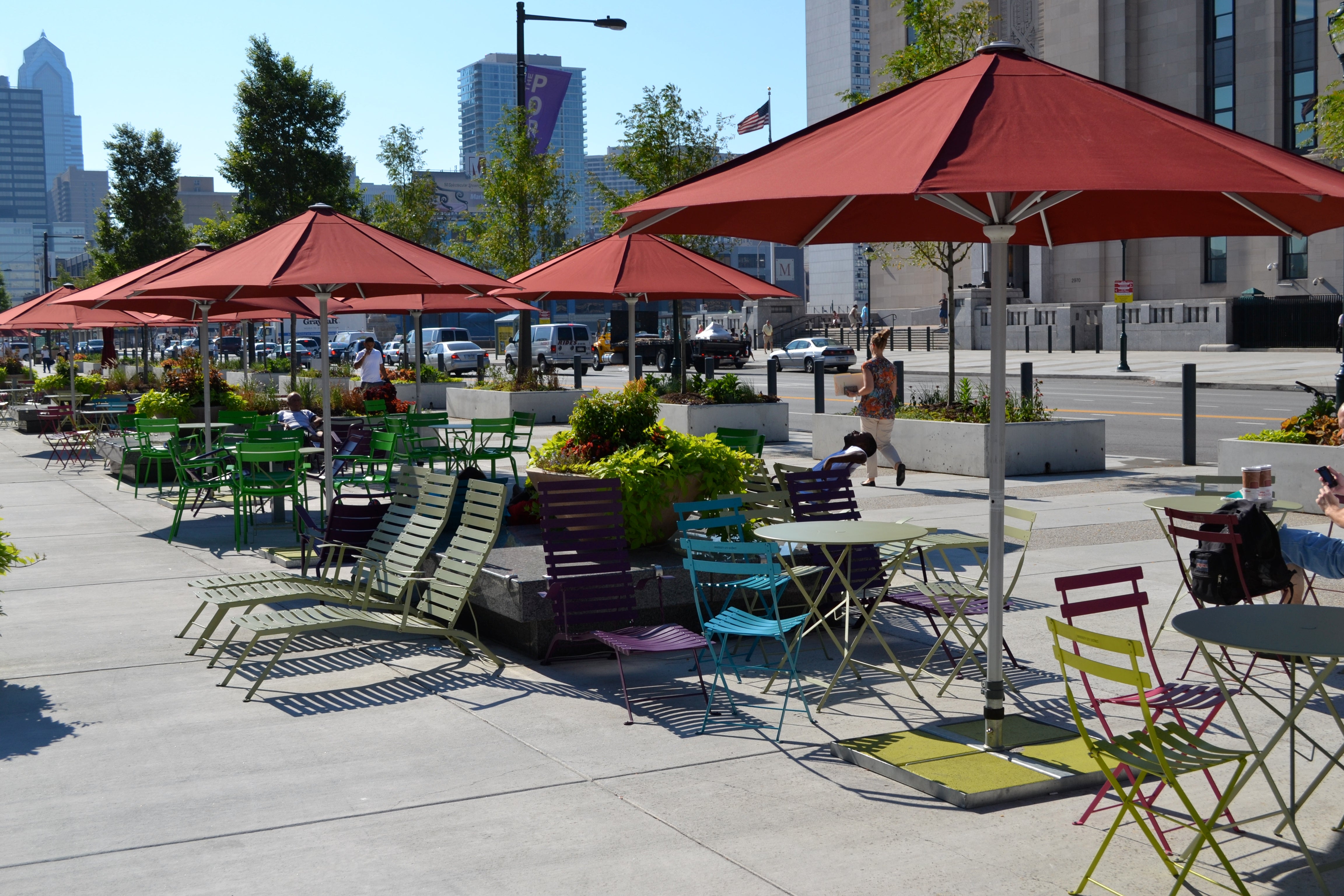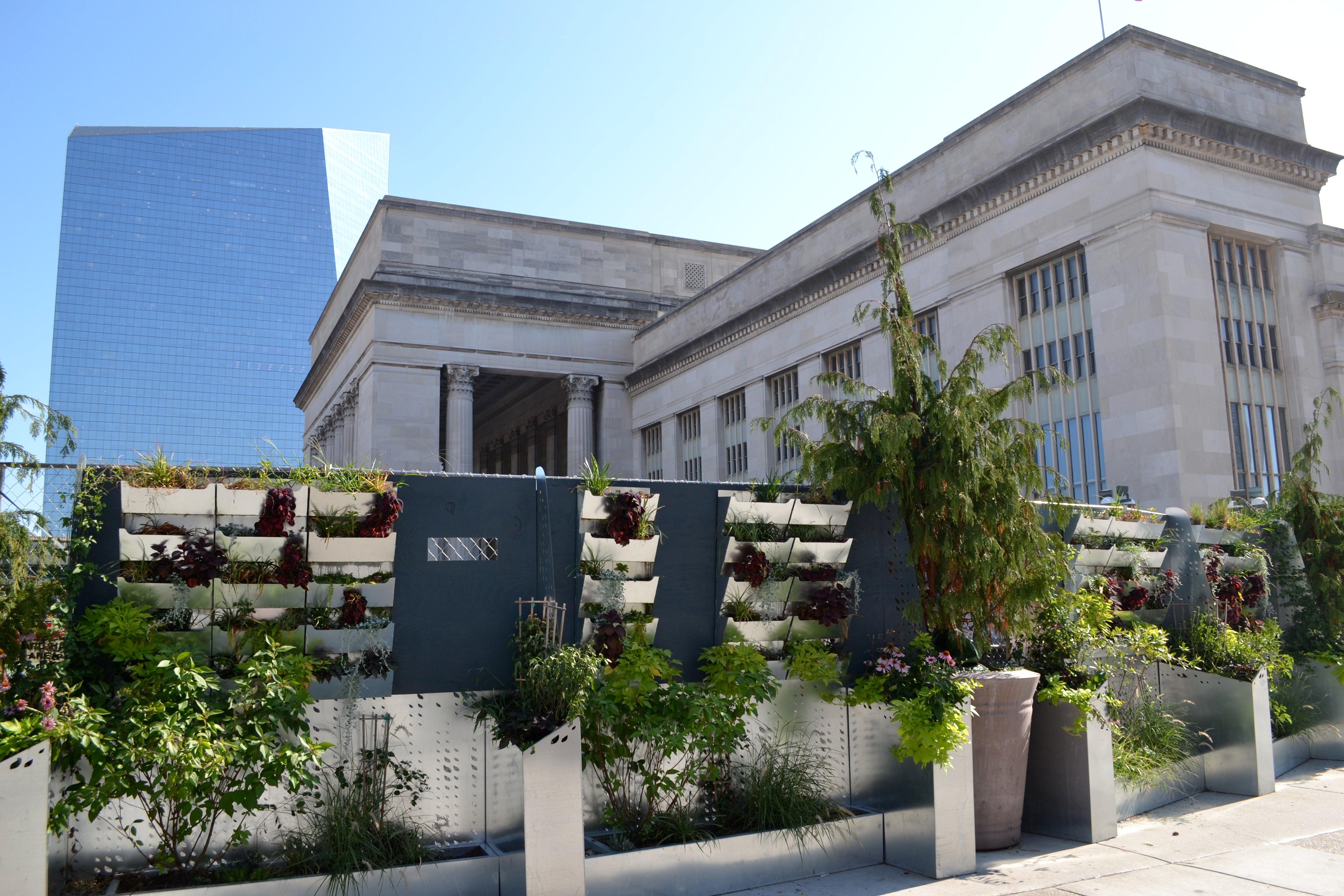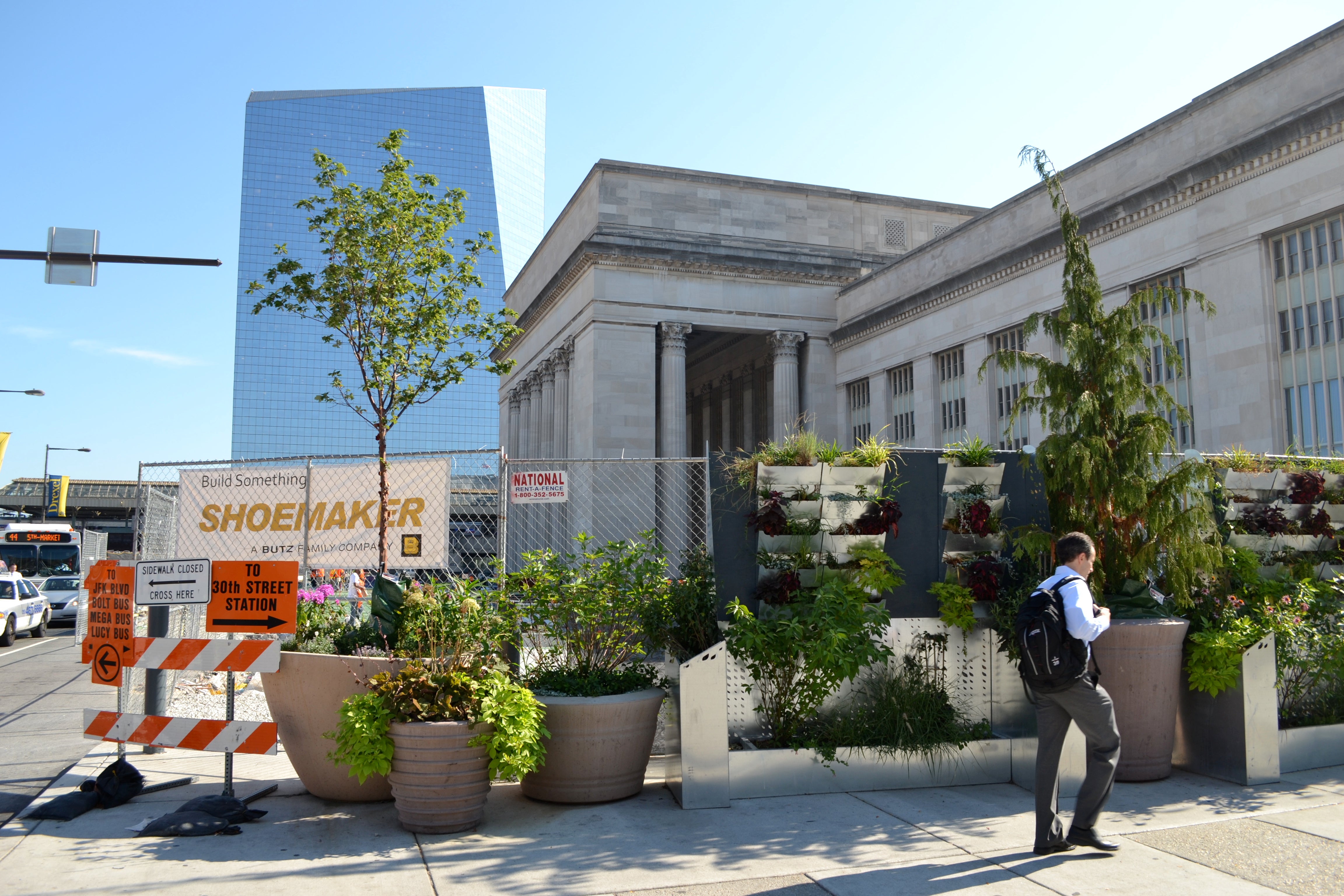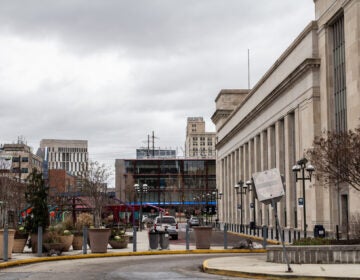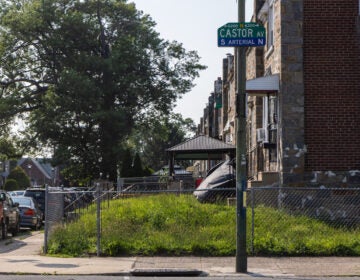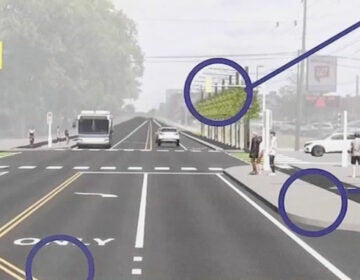Construction near 30th Street Station wrapping up this fall
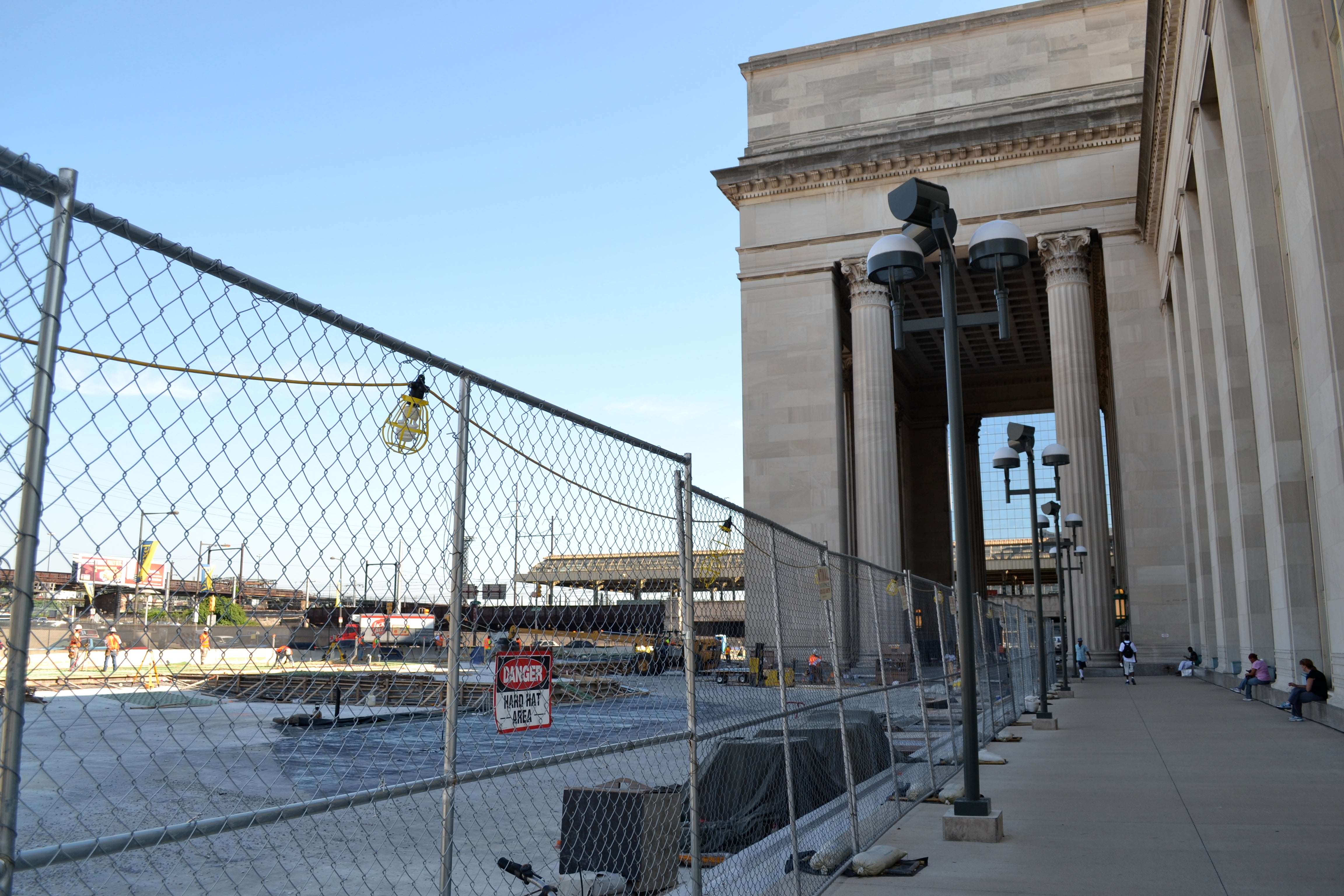
If you’ve passed through the 30th Street Station area lately, you have likely seen construction fences around the station’s west entrance. While this Amtrak project is buzzing along, PennDOT is completing adjacent work underground. Between the construction fences, subsurface work and an extended timeline, it can be hard to keep track of what is going on.
PlanPhilly caught up with PennDOT and Amtrak to find out what work is left and what to expect when both of those projects wrap up this fall.
Amtrak’s West Plaza Makeover
Amtrak is responsible for the construction that is visible immediately outside of 30th Street Station’s west entrance. That project has been diverting pedestrian and vehicle traffic since fall 2012.
Still on track, Amtrak plans to finish the $30 million project this November. When complete, the new west entrance will provide improved vehicle traffic and pedestrian flow around the station, enhanced lighting for better security and visibility, and expanded public parking.
This past spring, University City District (UCD) installed modular green plant walls in front of the construction fences to replace the standard construction site view with a lively distraction. According to Prema Gupta, director of planning and economic development at UCD, the plant wall was a project UCD had wanted to do for a long time. This project provided the right opportunity.
“Amtrak was a really fantastic partner with the green wall that we did,” Gupta said. “That was really driven by the construction project.”
Amtrak will continue with some construction through the fall 2014 to fortify the infrastructure and improve parking conditions underground.
PennDOT’s unseen, critical construction
Next to Amtrak’s construction is a separate PennDOT project that has been rehabilitating six bridges over Amtrak’s Northeast Corridor rail lines. The bridges carry portions of Arch, 30th, Market, Little Market and Chestnut streets, but to most users, the bridges look like a typical roadway.
“It’s definitely more complicated and unusual because these are six bridges that the motorist doesn’t even know they’re going over,” said PennDOT spokesperson Gene Blaum.
The bridges were built in the 1930s and were in critical need of structural steel repair. In March 2011, PennDOT launched the then $50.8 million rehabilitation project. Since that time crews have been replacing deteriorated structural steel, repairing deteriorated concrete and support piers, painting structural steel and replacing expansion joints.
This work will conclude in September.
Most of the work took place below ground, which meant the project required minimal traffic rerouting but came with its own unique challenges.
The work was above Amtrak’s 12 Northeast Corridor rail lines. During construction Amtrak gave PennDOT clearance on two rail lines at a time.
At the same time, some of the structural support columns sit on the ceiling of SEPTA’s Market Frankford Line. Harold Windisch, PennDOT’s senior assistant construction engineer, said just about every column needed base repair in addition to other work. Base repair meant digging into the three feet of filling around each column and above the subway, exposing the steel, reinforcing it if necessary and then encasing the column base in concrete.
Much of the construction project, including the concrete casings added to the columns, was done to waterproof the bridge structures.
“What really causes deterioration is water penetration,” Blaum said.
Another challenge that came with the underground work was visibility.
“You can only see what you can with flashlights, and it’s hard to determine the extent of deterioration because of corrosion and everything,” Windisch said.
For that reason, PennDOT ran into more corrosion than expected.
When crews blasted the structural steel and primed it for painting, they discovered additional deterioration. A photo shown at last month’s Delaware Valley Regional Planning Commission’s board meeting showed a fist-sized hole corroded through one of the steel beams. Windisch said there were lots of holes in the steel.
To repair the originally unseen corrosion, PennDOT added $10.2 million to this project, bringing the total project cost to just more than $60 million. PennDOT was also forced to extend the deadline from December 2012 to September 2013.
“You want to proceed ahead but you have to fall back with the steel repairs,” Windisch said.
When construction wraps up in September, motorists and pedestrians won’t notice much difference, but for PennDOT, the project’s completion is significant.
“This was a hugely important project,” Blaum said. “…We’re happy to be nearing completion”
Additional Improvements
Not all of PennDOT’s work was below ground. In addition to some roadway improvements, PennDOT installed automated voice pedestrian crossing signals at the intersections of 30th and Market and 30th and Chestnut streets, at the request of the Philadelphia Streets Department.
The PennDOT project also made “The Porch” possible.
Way back in 2008, the Philadelphia City Planning Commission had the firm of Bohlin Cywinski Jackson design “Station Square.” The concept was supposed to improve the 2900 block of West Market Street between 30th Street Station and the IRS building by reducing the vehicle travel lanes and adding pedestrian landscape improvements. The goal was to create a gateway between University City and Center City.
The project was shelved because of financial limitations, but in 2010 University City District took over. Piggybacking off of the PennDOT project, UCD had PennDOT convert the asphalt roadway along 30th Street’s south side into a 50-foot-wide concrete pad. UCD added planters, umbrellas and bright furniture, and The Porch, a cost effective take on Station Square, was born.
“Without that PennDOT project there would be no porch,” Gupta said.
Gupta said she has long been captivated by the way the impact of a construction project can benefit pedestrians. This PennDOT project is one example.
Though the Amtrak and PennDOT projects are independent, the Amtrak project will have a positive impact on PennDOT’s work. As part of the project, the whole west plaza is being graded to drain better. In addition, planters that used to drain onto the PennDOT bridges below ground will be replaced with enclosed planters. This will help reduce the water that leaks onto PennDOT’s structures.
With the waterproofing and steel repairs, the newly rehabbed bridges should last 70 to 100 years before major repairs are necessary, Windisch said.
“I’m confident this will have a long service life.”
WHYY is your source for fact-based, in-depth journalism and information. As a nonprofit organization, we rely on financial support from readers like you. Please give today.



